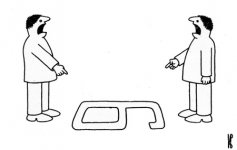arvistro
Elite member
- Messages
- 1,004
- Reaction score
- 187
- Points
- 0
What?Baltic loanwords to Finnish and Saami are the best kept secret.
I can tell you a secret:
ON THE "EARLY BALTIC LOANWORDS IN COMMON FINNIC. PETRI KALLIO:
https://www.academia.edu/1103450/On_the_Early_Baltic_Loanwords_in_Common_Finnic
One more secret:
Baltic loanwords in Mordvin
http://www.sgr.fi/sust/sust266/sust266_grunthal.pdf
One more secret:
AREAL RELATIONS OF INDO-EUROPEAN LOANWORDSIN FINNIC DIALECTSVilja Oja (google it)
One more secret:
https://www.academia.edu/24412838/Proto-Finnic_loanwords_in_the_Baltic_languages
One more:
http://etalpykla.lituanistikadb.lt/fedora/get/LT-LDB-0001:J.04~2011~1367180894977/DS.002.1.01.ARTIC
(Baltic loanwords in Saami, by Blažek and Hofirkova)
More:
https://www.academia.edu/1103685/Stratigraphy_of_Indo-European_Loanwords_in_Saami
(Petri Kallio)
If you get into details, you would notice that most of authors (except for Blažek) are Finnic. And all of them acknowledge early Baltic (Balto-Slavic) loanwords into different Finnic languages. Extreme objectivity could be noticed by Mr Junttila's "Proto-Finnic_loanwords_in_the_Baltic_languages", where he disputed proto-Finnic loanwords in Baltic.
Those are Hungarian and Italian problemsHungarians first disagree about grouping with fins.
There are Italian linguists publications also.
Only thing they revise is the exact branching of Finno-Ugric/Uralic...Today’s Finnish linguistic science strongly revises the Finno-Ugric language theory.
Yes, how and when Pre and Proto Germanic loanwords entered Finnish language. That is what they research.
Finnish linguists research the Finnish-Old Germanic relationship,
Oh man...or are the followers of the theory of Finnish continuity, rather than the Finno-Ugric language relationship.
http://www.magtudin.org/Maracz L. Untenability of Finno-Ugric Theory.htm
I have seen such people. There is a number of Finnish guys on forums, who goes like this:
a) Finno-Ugric does not exist, (i.e., we are blond race not related to those Syberians...)
b) if a) fails, all Finno-Ugrics were originally blond whites from Europe, who then went into Syberia.
Something similar for some Hungarian machos too.
But you have to differentiate between people doing great science like those Finnish authors I copied and people who go after some agenda.
Kotlets to kotlets and flies to flies.


